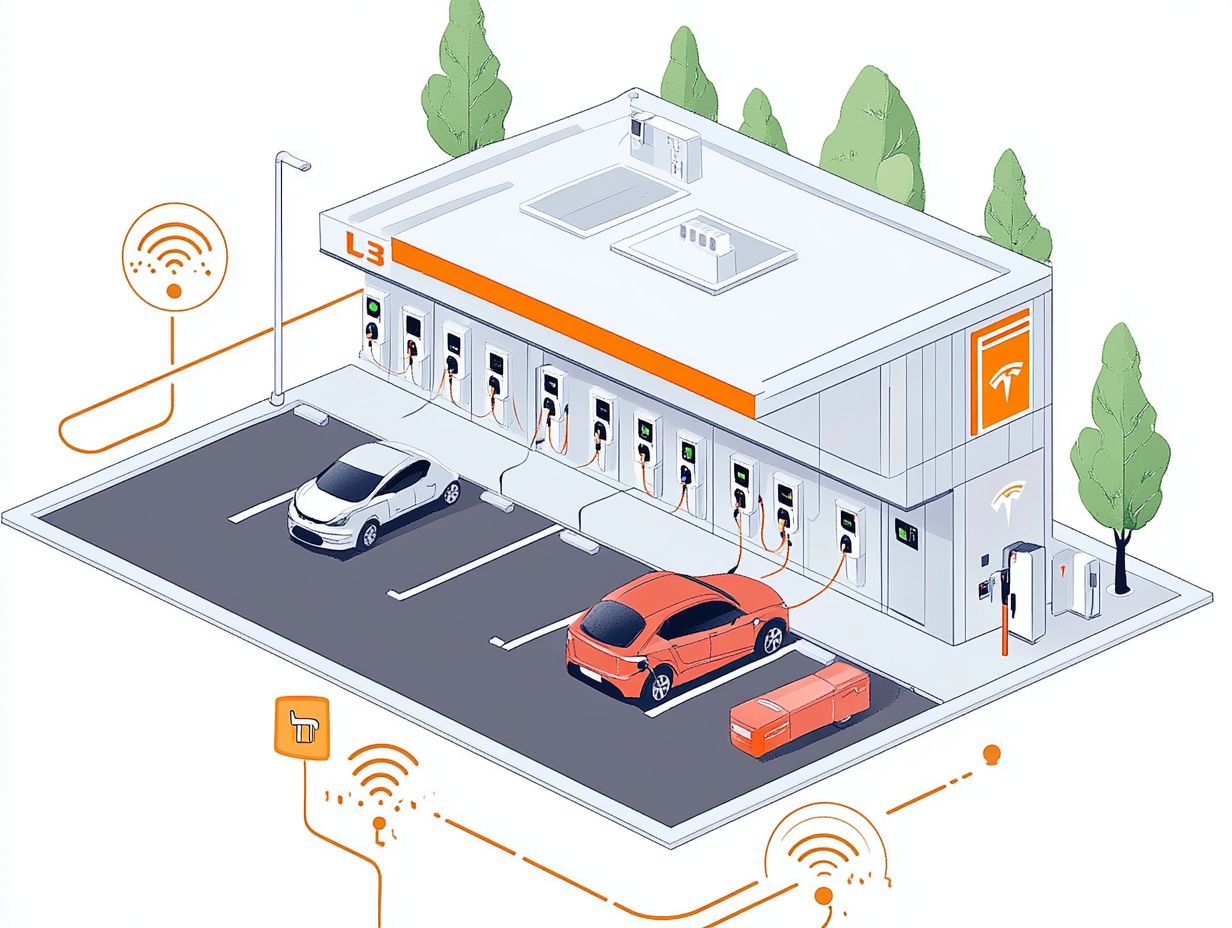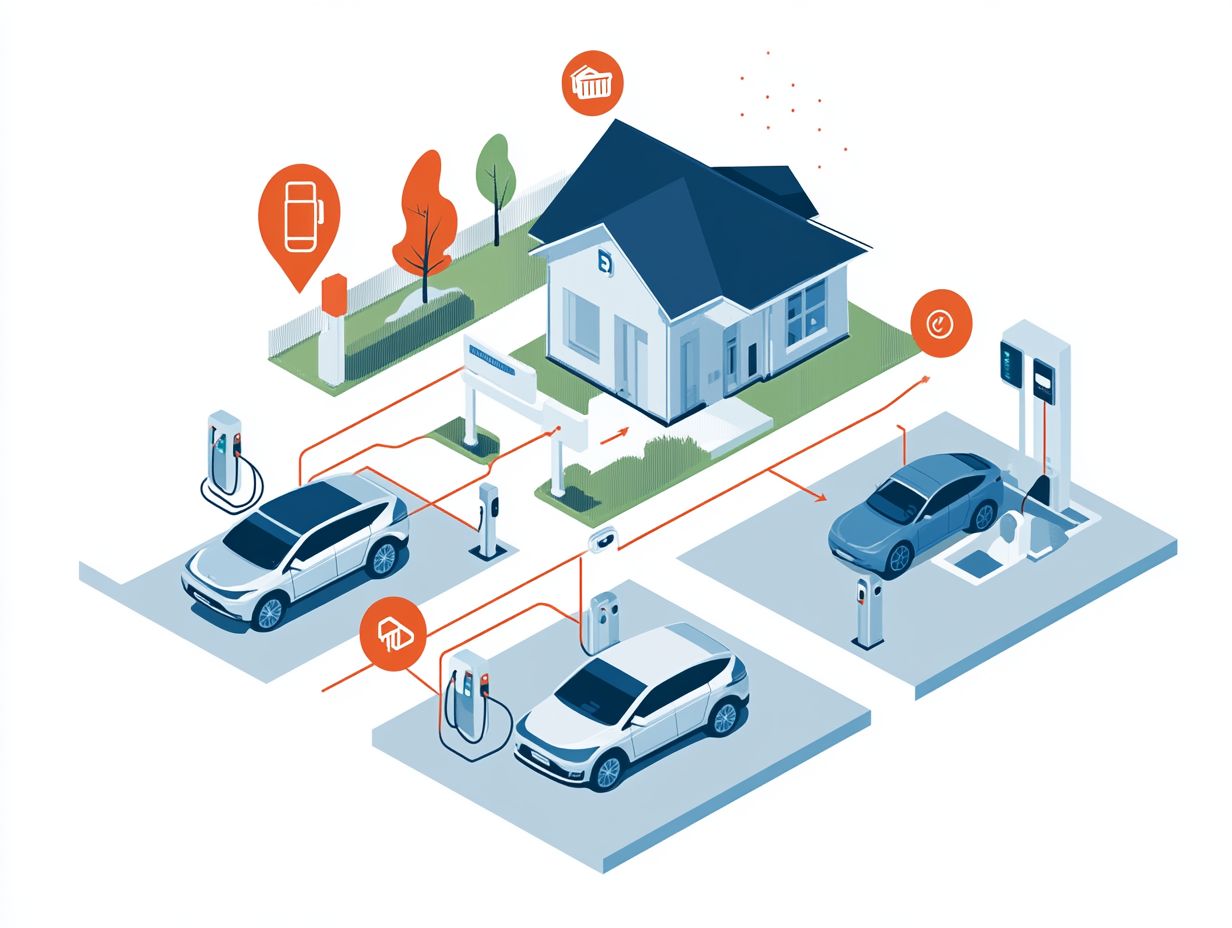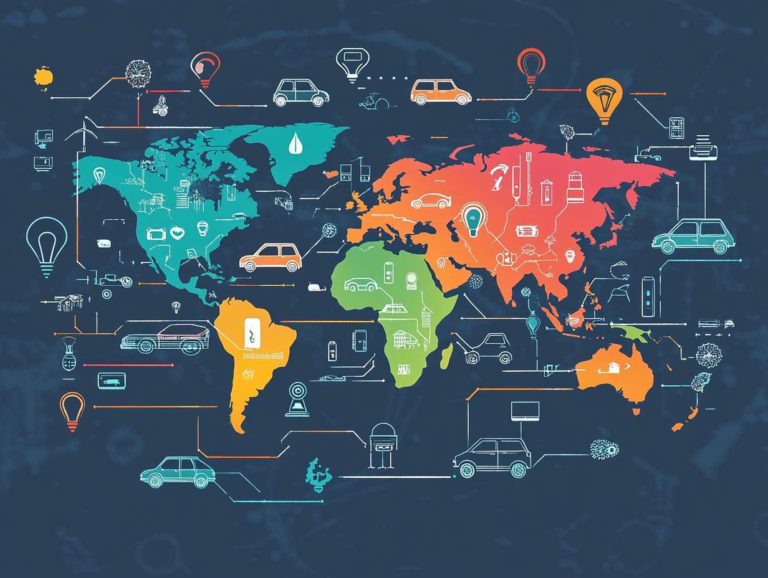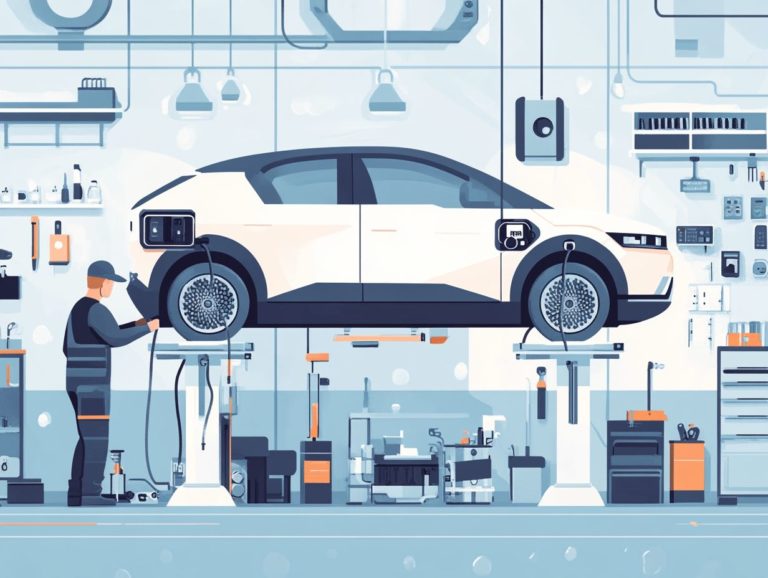What Are the Different Charging Levels for EVs?
As electric vehicles (EVs) gain traction, it s crucial for you to understand the different charging levels available. This article delves into the three primary types of charging: Level 1, Level 2, and DC Fast Charging. You ll discover their unique features, charging speed, and the advantages and disadvantages of home versus public charging stations. By the end of this read, you ll be ready to choose the best charging solution that suits your needs, paving the way for a seamless and efficient EV experience.
Contents
Key Takeaways:

- Level 1 charging is the slowest charging option for EVs, but it s super handy for charging at home.
- Level 2 charging is faster than Level 1 and is commonly found at public charging stations. It is a good option for daily charging needs.
- DC fast charging is the quickest option, providing a significant charge in a short amount of time. However, it is only available at select public charging stations.
Understanding the Basics
Understanding the fundamentals of electric vehicle (EV) charging is crucial for you, whether you’re a new or seasoned EV owner. It includes different levels of charging, each offering distinct charging speeds and power outputs. You have basic Level 1 chargers, typically found in residential settings, and then there are the impressive DC fast chargers that provide rapid energy recharge at public charging stations. Each option is tailored to meet different needs and vehicle specifications, so being informed about these varying levels can significantly reduce range anxiety and support the growing adoption of EVs worldwide.
The type of connector impacts charging speed. For instance, the popular SAE J1772, a standard connector for Level 1 and Level 2 stations, is commonly found in these setups, while the CHAdeMO and CCS connectors cater to rapid charging applications. These connectors not only determine whether your EV is compatible with a charging station but also impact the efficiency of the charging process.
As a potential owner, it s essential to consider the installation costs associated with home charging stations along with ongoing service requirements especially in commercial settings where energy demands are higher and usage is greater. This info helps you make better decisions for your overall EV ownership experience.
Level 1 Charging
Level 1 charging is the most fundamental method for electric vehicle charging, utilizing a standard household outlet to deliver a modest power output of around 120 volts. Though it’s slower than other options, it’s perfect for everyday use.
While this type of charging may be slower than its higher-level counterparts, it offers EV owners the ease of charging their vehicles overnight without the necessity for specialized equipment. This simplicity means you save a lot on installation, as it typically requires just a dedicated circuit to operate effectively.
Features and Charging Speed
The features of a Level 1 charger are all about simplicity and accessibility. It offers a modest charging speed of about 4 to 5 miles of range per hour, which means you might find yourself facing lengthy charging times to get a full charge on most electric vehicles. With a power output typically around 1.2 kW, it s perfect for overnight charging but not exactly a speedy solution for quick top-ups during the day.
For many users, especially those with shorter daily commutes, this slower pace can be just fine. You can easily return home, plug in overnight, and greet each day with a fully charged battery. However, it s important to remember that charging efficiency can be affected by various factors, such as the age of your vehicle’s battery and ambient temperature.
This is why considering your vehicle’s specifications is vital when opting for Level 1 charging. Some models may charge efficiently enough overnight, while others might need a faster option if you find yourself needing extra range during the day.
Level 2 Charging

Level 2 charging represents a notable advancement over Level 1, providing enhanced charging speeds and greater efficiency. This makes it an attractive option for both home installations and public charging stations.
With power outputs typically ranging from 3.3 kW to 22 kW, Level 2 chargers can significantly replenish an electric vehicle s battery. You can enable a full charge within just a few hours, depending on your vehicle s specifications and the charger’s capabilities.
Features and Charging Speed
Level 2 chargers stand out for their versatility and efficiency, providing charging speeds of 10 to 25 miles of range per hour. You can enjoy significantly quicker charging times compared to Level 1 chargers.
With a power output that can reach up to 80 amps and 240 volts, Level 2 chargers are designed to accommodate a variety of electric vehicles. This enhances both their charging capabilities and your convenience.
For those who travel daily, the difference in charging speed can profoundly impact your routine. This allows you to spend more time on the road and less time tethered to a charging station.
When you compare Level 2 chargers to Level 1 options offering a mere 4 to 5 miles of range per hour the benefits of Level 2 become clear, drastically reducing frustrating waits.
Experience the thrill of faster charging with many electric vehicle models! Proper installation of Level 2 chargers is vital. Ensuring your electrical system can handle the power demands guarantees safe and efficient charging. This way, you can drive with peace of mind, knowing that range anxiety will be a thing of the past.
DC Fast Charging
DC fast charging is an advanced charging option for electric vehicles, crafted to deliver high power output and rapid charging capabilities that dramatically reduce charging times. This technology is a game-changer for both businesses and public charging spots.
In contrast to Level 1 and Level 2 chargers that depend on AC charging, DC fast chargers can offer outputs exceeding 100 kW. You can achieve an 80% charge in just about 30 minutes, effectively addressing the urgency that often accompanies long-distance travel.
Features and Charging Speed
The features of DC fast chargers are designed for efficiency and speed, boasting charging speeds that can deliver over 200 miles of range in under 30 minutes. This is a crucial advantage for those who are often on the go.
With power outputs ranging from 50 kW to 350 kW, these chargers cater to a variety of electric vehicle specifications. They are essential to the public charging infrastructure.
This rapid charging capability not only alleviates range anxiety but also promotes a wider adoption of electric vehicles. It enables longer journeys without the persistent concern of running out of battery.
As compatibility with different electric vehicle models continues to improve, more drivers can take advantage of the convenience these chargers offer. Their strategic placement in urban areas enhances accessibility, allowing you to recharge swiftly during brief stops. This ultimately facilitates a seamless transition to electric mobility while supporting sustainable transportation solutions.
Choosing the Right Charging Level

Choosing the right charging level for your electric vehicle needs you to consider a few key factors, including your vehicle’s specifications, daily mileage, and the charging capabilities that align with your lifestyle.
The choice between Level 1, Level 2, and DC fast charging solutions not only influences how conveniently you can recharge but also affects installation costs, energy consumption, and the long-term savings you can achieve with each charging option.
Ready to find the perfect charging solution for your lifestyle?
Factors to Consider
When selecting the ideal charging level, several important factors matter, including your driving habits and the specifications of your electric vehicle that dictate its charging capabilities. It s essential to weigh considerations like charging time, the availability of public charging stations, and potential cost savings through efficient charging solutions to ensure a top-tier charging experience.
Your daily mileage is a significant factor. If you tend to cover longer distances, opting for higher charging levels may help minimize downtime. The range of your electric vehicle also plays a pivotal role; a vehicle with a greater range can reduce the frequency of charging sessions.
Don’t overlook the costs associated with home installation, as these can substantially influence your decision beyond just the charging technology itself. Evaluate public charging options as well, especially the accessibility of DC fast chargers, which provide rapid charging for electric vehicles, especially for long trips.
This comprehensive approach not only enhances your overall satisfaction with electric vehicle ownership but also addresses both your personal preferences and practical needs.
Charging at Home vs. Public Charging Stations
The choice between charging at home and using public charging stations is a pivotal consideration in your electric vehicle journey. Each option presents unique advantages and drawbacks that can greatly influence your experience.
Charging at home is convenient and cost-effective. You ll wake up to a full battery every morning! On the other hand, public charging stations offer quick access. They’re perfect for those on the go, easing range anxiety.
Pros and Cons of Each Option
When considering the pros and cons of home charging versus public charging stations, you must take into account factors like convenience, charging rates, and overall cost savings. Home charging offers the flexibility of charging whenever you want, freeing you from the hassle of frequent trips to public stations.
Public charging provides rapid access to energy replenishment, alleviating any range anxiety you might feel during longer journeys. For many electric vehicle (EV) users, the choice often hinges on personal driving habits and lifestyle. Home charging typically requires an initial installation investment, which can vary depending on your electrical setup, but it usually leads to lower long-term costs, particularly for those who drive daily.
Conversely, public charging stations have the edge when it comes to speed; many are equipped with fast chargers that can significantly boost your battery life in under an hour. However, these stations might not always be conveniently located, potentially throwing a wrench in your plans if you rely on them.
By understanding these factors, you can make an informed decision that aligns perfectly with your needs and daily routines.
Frequently Asked Questions

What are the different charging levels for EVs?
There are three main levels of charging for electric vehicles: Level 1, Level 2, and DC Fast Charging.
What is Level 1 charging for EVs?
Level 1 charging means you plug your car into a normal outlet. It provides 2-5 miles of charge every hour.
What is Level 2 charging for EVs?
Level 2 charging is faster than Level 1. It uses a 240-volt outlet and delivers about 10-20 miles of range per hour. It is the most common charging method for EVs at home and in public.
What is DC Fast Charging for EVs?
DC Fast Charging is the quickest way to charge. It provides 60-80 miles of range in just 20 minutes. This method is primarily used for long-distance travel and is available at select public charging stations.
Which charging level is best for me?
The best charging level for you depends on your specific needs and preferences. Level 1 is suitable for overnight charging at home, Level 2 is great for daily charging at home or work, and DC Fast Charging is ideal for long-distance travel.
Do all EVs use the same charging levels?
No, not all electric vehicles (EVs) charge the same way. Some can only use Level 1 and Level 2 charging, while others can also use fast charging, which quickly powers up your battery.
Always check your specific EV model’s charging capabilities before heading to a public charging station. Knowing this can save you time and ensure you stay powered up on the road!






